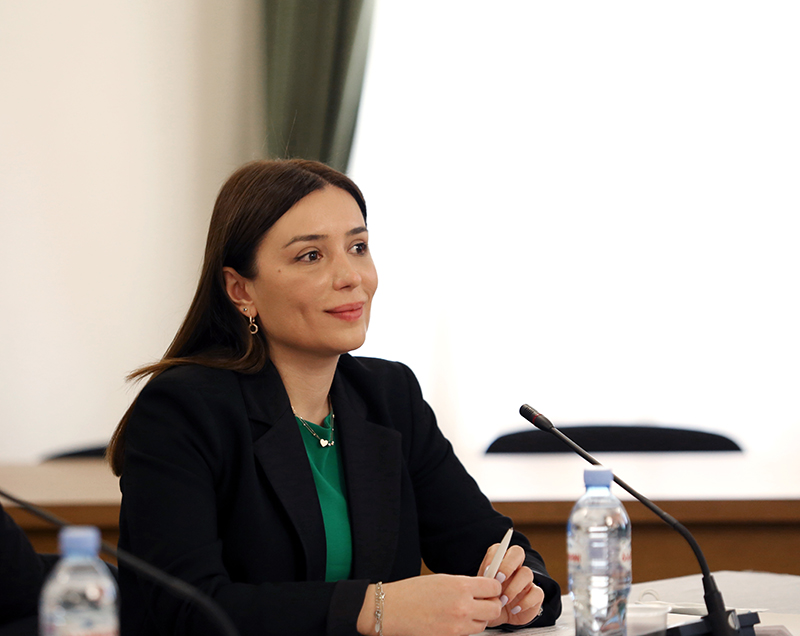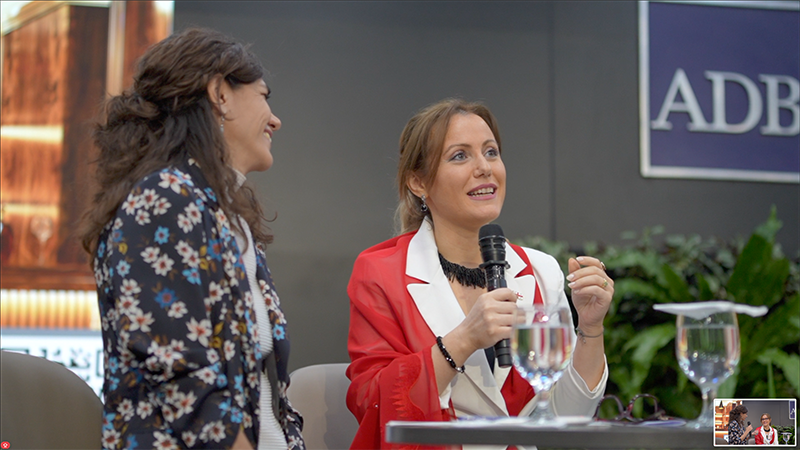Business and Societal Benefits of Companies Transitioning Towards a Circular Economy
Mr. Pär Larshans, Director of Sustainability & Public Affairs at Ragn-Sells.
Over the years, Mr. Larshans has delivered more than 1,000 speeches on sustainability related topics. He counts more than 25 years of professional experience in the field of sustainability management. Mr. Larshans supports the Government Offices of Sweden as an expert on environmental goal-setting. He previously held appointments at the Ministry of Industry and Ministry of Environment of Sweden.
Ragn-Sells is a Swedish privately held corporate group created in 1881 and operating in Sweden, Norway, Denmark, and Estonia. Since 1966, Ragn-Sells has been involved in waste management, environmental services, and recycling. The group collects, treats and recycles waste and residual products from businesses, organizations and households. The company has developed a range of highly climate-effective circular solutions fitted for the circular economy to come support today waste2energy systems and waste waters treatment plants to become resource-and detoxifying plants in a future circular economy.
In this exclusive interview Mr. Larshans shares Ragn-Sells experience in managing waste and reducing emissions in Sweden in order to become a climate positive company by 2030, and calls on companies to turn environmental challenges into business plans.
Why are companies moving towards the circular economy, what are the business and societal benefits of the circular economy and eco-innovation approaches?
There are several reasons but the most important are the positive climate effect that circular material flows can have and we also already now know that the need for many elements are exceeding the possibility to mine them – copper, cobalt and another 40 elements are much needed in the digital-and electrified transformation that are taking place from now and the next 30 years. Even the need for iron will lead to sourcing problems.
There are many companies already today that see the challenges of how to meet their need for raw materials and it leads to those companies securing their materials from what they put on market by themselves. Batteries are one concrete example.
A circular economy needs new types of regulations in place to enable circular material flows, but it will be important to include a decontamination step so that we don’t risk the health of future generations.
How can business and government drive the transformation towards a circular economy? In your country what are both business and government doing to make the green economy a reality?
In todays linear economy we are organized in branches, in today’s economy it means that we are part of the waste management industry, in tomorrow’s circular economy we will organize the society into value chains, because in a fully circular economy there will not be any waste. It is true that we will have toxic substances that we need to take out of the ecosystem or make sure that they are only used for what they are needed for. When you organize in material flows you will need to have policymakers’ support in enabling it with different tools – this could be material quotas, tax benefits, but the most important are to make sure that the legislation for circular material flows are bases on QUALITY criteria, and not origin. If it has been defined as waste, in many countries it is not allowed to be used to produce new products. To be honest, what is today waste are resources in disorder – and you will only need the correct treatment method in place to make them back ‘in order’ again. Our ash2salt (Ash2Salt (easymining.se), ash2phos Ash2Phos (easymining.se) are examples of processes that can restore that quality of the material to at least the same quality or even better than from the original production.
What are the main challenges of businesses in the process of transitioning to eco-innovation approaches?
There are several challenges but the most challenging is the culture aspect, we need to be experts in collaborating and then we have the need to change the legislation as well. A circular economy and circular material flows will not take into consideration that country borders exist, so it means that the laws enacted need to be the same across a larger geography like in the EU or even preferably in global trade deals (WTO).
What are the targets that you have set for Ragn-Sells to drive green products and production processes throughout your supply chain?
We have set climate targets as the highest priority but then we also have the decontamination principle which is just as important to fulfill. What is important to state is that we will exist in today’s waste management industry as long waste exists but our focus is to develop circular chemical processes that will be part of several different “supply circles” (not supply chain that has a beginning and an end). When we did our forecast in 2015, which is the basics for our company strategy today, we understood that in a future circular economy “waste” will not exist and therefore there will be no need for waste management companies either.
How has COVID affected your decision-making in the process of the adoption of green and clean technologies and practices? How has it affected your supply chain and what steps have you taken to support the supply chain?
We have not been affected at all or only partly (where we had customers in the transport, hotels, restaurants of course). What we have seen is that global supply chains from mined resources are already today hard to get, and it has led to sourcing from waste has increased. We have increased our turnover and at the same time been able to reduce our cost. We see this as a proof that our strategy to become a raw material supplier and detoxifier in a future circular economy are the correct way. Our increased ability to collaborate has also led to new business agreements in new geographies as well and an increased interest from society.
How can you deliver products without generating waste? How can you create circular material flows, assets and resources to be developed to scale change across businesses?
First you need to design products so it will be possible to keep the value of the raw material in loops, then you need to collaborate along the value circle both upstream and downstream in order to secure both your supply but also the correct use of the product. Then you will need to ensure that you can operate in an economy of scale, but here there are a lot of challenges with today’s legislation.
What steps has your company taken towards low-carbon and resource-efficient operations?
We have a plan to become climate positive before 2030, it means that we will reduce our own CO2 impact by at least 50 per cent by 2030 but also introduce new circular solutions that will either reduce CO2 emissions or even use CO2 as input in processes: he OSA project in Estonia is one example where we have developed a method to use CO2 to eject into the ash from the ash mountains in Estonia. The first production unit is planned to be up and running from 2025 producing PCC (filler) but in total this single project has the potential to reduce the global CO2 emissions by 400 million tons or the equal sum of 8 years of CO2 emissions that Sweden had as a nation in 2019. https://www.osaservice.ee/en/ Another example is the Re-Fertilze project or Project Nitrogen which will reduce the need to produce nitrogen fertiliser with the Haber Bosch method and at the same time avoid huge ‘laughing gas’ emissions (N2O) to occur. LIFE RE-Fertilize (easymining.se)




 Search
Search





